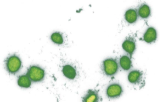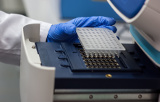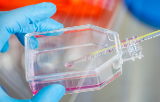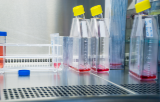
Cell Culture contamination control
Mycoplasma contamination represents a major concern for academic (e.g. cell biology) or biopharmaceutical (production of vaccines, monoclonal antibodies etc.) facilities.
Mycoplasmas are the smallest self-propagating microorganisms and can reproduce in the extracellular space. While mostly harmless in humans, other animal hosts, and plants, some species can cause human diseases. In particular, 6 species represent a frequent cause of contamination in continuous cell lines and primary cells. Due to their size, mycoplasmas evade detection (e.g. microscopy) and yet profoundly alter cell cultures (metabolism, cell growth, pH, viability, membrane transport).
The main source of mycoplasma contaminations are other infected cell cultures as well as culture media, reagents (fetal bovine serum, trypsin, etc.) and laboratory personnel.
Mycoplasma contaminations can cost money, time, and reputation, undermine research findings or impact safety of biological therapeutics. Successful strategies against mycoplasma contaminations are prevention, early detection, disposal of infected materials or mycoplasma elimination.




